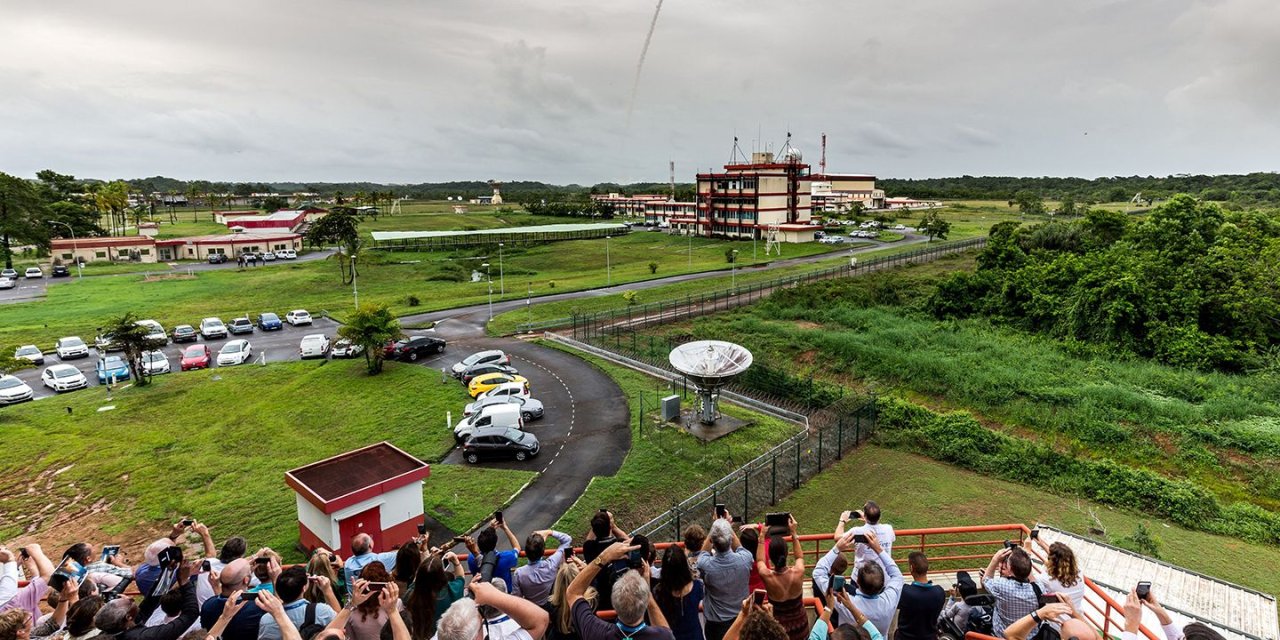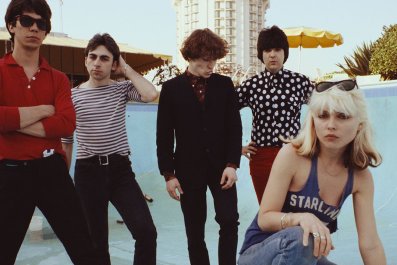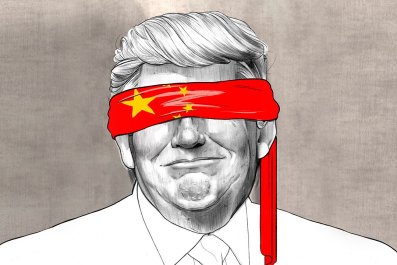Just over a steep hill, near the coast of French Guiana, launch towers rise from the jungle floor. Rockets beam in the tropical sun, waiting for the next mission to propel satellites and spacecraft out into the universe. Jaguars, snakes and lizards dart among railroads, warehouses and vats of fuel.
Sprawling across an area the size of Brussels, the Guiana Space Center is the second-busiest spaceport in the world, after Cape Canaveral in the U.S. The proximity to the equator makes it an ideal launching pad for weather and communications satellites. And last year, the center saw a string of landmark launches, including an international mission to Mercury. It is even slated to blast NASA's James Webb Space Telescope—the successor to the Hubble—into orbit around the sun in 2021. To France, it's the pride of Europe's space program.
But to residents of this impoverished South American territory, the spaceport has come to symbolize something very different: vast economic inequality. Nearly a quarter of the population here is unemployed, double the rate of the French mainland. Crime is rampant. And some 46,000 people do not have direct access to clean drinking water, according to anthropologist Isabelle Hidair-Krivsky of the University of Antilles. So, in the spring of 2017, as the center prepared to launch South Korean and Brazilian satellites, protesters blocked the roundabout leading to the spaceport and stalled the missions.
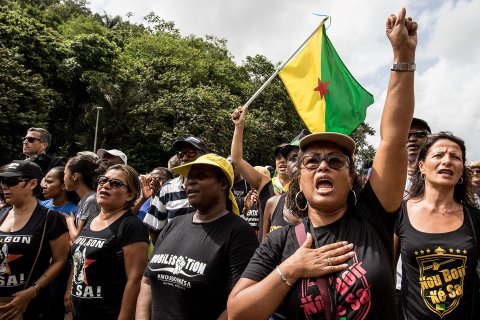
The movement's battle cry was adapted from a 1997 protest song by rapper Freaky Fan: "La Fusée Décolle, Mais la Guyane Reste au Sol" (The Rocket Takes Off, but Guiana Stays on the Ground). A month of territory-wide demonstrations and strikes closed schools, stranded ships and grounded flights, pushing the French government to the negotiating table. Officials soon signed the Accord de Guyane, a document in which the mainland promised French Guiana investments in infrastructure, policing and health care.
More than a year and a half later, however, movement leaders say France has carried out just a fraction of its pledges.
The government initially committed 1 billion euros to an emergency plan that included security measures to combat drug trafficking and illegal gold panning, as well as the hiring of more than 100 new law enforcement members. More than 80 percent of these measures have been implemented, French authorities say. But medium- and long-term projects that required some 2 billion euros of additional funding are stalled, angering activists who view them as critical. Less than half of these projects—like the construction of schools and the roll-out of a clean drinking water project—have been completed; the government puts the figure at 38 percent.
"There hasn't been any change," says Davy Rimane, a spokesman for the protester collective behind the mass demonstrations in 2017. "The social, economic and sanitary situation, as well as the latent insecurity, remains the same."
Rimane, who ran unsuccessfully for a legislative seat last year, accuses Emmanuel Macron's government of arrogance, deceit and condescension. (The president sought to temper expectations about the deal on his visit to French Guiana in October 2017, warning, "I'm not Santa Claus because Guiana people are not children.") Neither the French prime minister's press office nor the Élysée presidential palace responded to Newsweek's requests for comment.
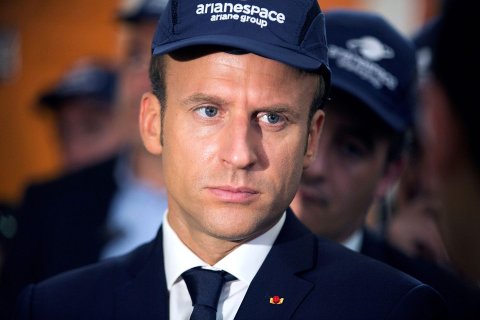
Relations between the mainland and the territory have only deteriorated, Rimane says, with occasional protests disrupting commerce. "Things are so tense that everything could blow up all over again," he says.
The mistrust has deep roots in a colonial past.
Once home to numerous indigenous groups, Guiana was the site of French colonization efforts for centuries. Death, disease and territorial disputes dogged the region, which is arguably most famous for its spell as the site of a notoriously brutal penal colony. Today, Guiana's Devil's Island functions as a tourist site. But it was a violent, pestilent home for prisoners until about 1953, immortalized in the book Papillon by Henri Charrière.
The spaceport was built in 1965 on the site of Malmanoury, a village where 651 people, mostly natives, were expelled, says Hidair-Krivsky. Since then, the neighboring city of Kourou has become divided along socio-racial lines, she adds, with communities of French engineers, teachers and foreign transplants along the periphery of the space center, as well as along the coast, and many native residents living in neighborhoods farther from the site.
Today, some 15 percent of working people in French Guiana are involved "directly or indirectly" in the space industry, according to the European Space Agency website, while France's national statistics bureau has estimated the industry provides 4,600 jobs for the territory of 270,000 people. The ESA runs and funds the center with the French space agency CNES, which administers a 50 million euro program to aid in the social and economic development of Guiana. Dozens of private aerospace companies—most notably France's Arianespace, a leading satellite-launch company—also operate at the facility, employing locals and importing workers. A spokesperson for Arianespace also points to the company's contributions to Guiana via tax payments and philanthropy, including college scholarships.
Rimane, however, argues that France has invested in the spaceport at the expense of the territory's people. "There is a perimeter of privilege surrounding the space center that does not reflect the current situation of Guiana," he says.
The cost of living remains stubbornly high. In 2016, the region's gross domestic product per capita was less than half that of mainland France. Yet food products are 45 percent more expensive, and 40 percent of 15- to 24-year-olds are unemployed, while only half go to school, according to Hidair-Krivsky. Crime has reportedly risen sharply because of drug trafficking throughout the region; French law enforcement officials have said South American gangs use Guiana as a "back door" into Europe. And basic infrastructure has not kept pace with booming immigration rates; migrants from neighboring Brazil, Suriname and Haiti come to the territory because its link to France has given it a relatively high minimum wage and more generous social programs.
The spaceport is a hub for technology, Rimane says, but locals suffer from "catastrophic digital deployment." Some 80 percent of people aged 15 and older across France used the internet last year, according to the International Telecommunication Union, a U.N. agency that tracks web access. But in Guiana, that number is drastically lower; just 26 percent of the territory's population used the internet in 2009, the most recent year with available data. Activists say not much has changed since then.
Meanwhile, the ESA and the European space industry are developing a new rocket called Ariane 6, complete with a gantry so tall that French engineers call it a "movable Eiffel Tower." The price tag: 2.4 billion euros.
"We are entitled to wonder," Rimane says, "whether it is not simply a pure exploitation of our land."


